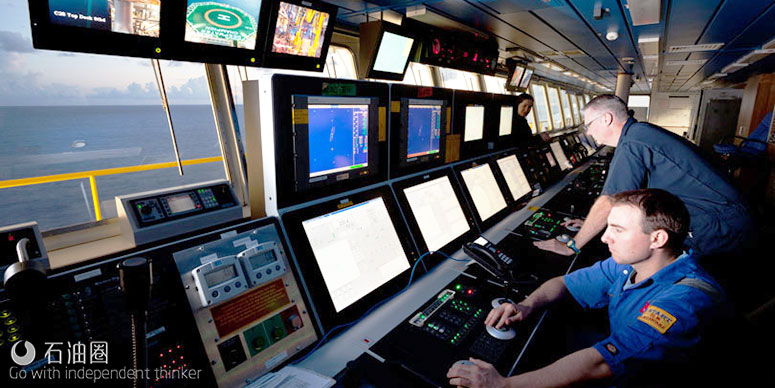With BSEE Well Control Rule in force, it’s time to take another look at RFC-HSE variant of MPD
Technique allows for increase in equivalent mud weight with modest application of surface back pressure at first indication of well flow
By Don Hannegan, Managed Pressure Drilling; Bhavin Patel, Harshad Patil and Maurizio Arnone, Weatherford; Jerry Lee, University of Houston
Drilling techniques associated with closed and pressurizable circulating mud systems have become standard on land drilling programs over the past several decades. This progression can be measured by the growth in rental activity of rotating control devices (RCDs). Because these techniques and technologies have proven effective onshore, greater application in marine environments seems uniquely logical.
A closed-loop system – comprising drillstring non-return valves, a fit-for-purpose RCD and a drilling choke – enables drillers to positively direct mud returns away from the rig floor and suppress influxes by quickly increasing equivalent mud weight. This offers the driller several advantages: keeping kick volumes small, minimizing downtime spent on well control scenarios, enabling drilling further from the fracture gradient and nearer to the formation gradient, and reducing lost-circulation incidents that may compromise the primary well control barrier (hydrostatic pressure).
Drilling with a closed-loop system has become standard operating procedure on US and Canadian land drilling programs, where it is often required by insurance underwriters and federal or municipal governments.
When these land-proven methods of mitigating drilling hazards were introduced to the offshore industry in 2004, they were categorized in context of the types of drilling challenges each had been proven to address and described as“variants” of managed pressure drilling (MPD). These are:
- Constant bottomhole pressure (CBHP) for drilling in narrow margins;
- Pressurized mud-cap drilling (PMCD) for dealing with severe to total loss zones;
- Dual-gradient drilling (DGD) for drilling in relatively depleted formations in deepwater; and
- Returns flow control for health, safety, and environmental considerations (RFC-HSE).
The RFC-HSE variant is the focus of this article. The Well Planning chapter of IADC Deepwater Well Control Guidelines, under the MPD Option section, describes RFC-HSE MPD as “a variation of MPD applicable to drilling with conventional fluids and well construction programs.” The equipment set-up would be similar, if not identical, to CBHP MPD. However, the purpose is simply to enhance the utility of the primary well control barrier by drilling with a closed-loop system.
Using a closed-loop system, the RFC-HSE variant of MPD facilitates early kick-loss detection, identifying wellbore ballooning/breathing, and using surface backpressure (SBP) to suppress an influx of reservoir fluids. The system could also be used to conduct dynamic formation integrity tests (FITs) and leak-off tests (LOTs) to ascertain downhole conditions.
Background
As envisioned, an RFC-HSE MPD system comprised an RCD installed on top of a land rig’s BOP to positively divert annular returns from beneath the rig floor. However, in marine environments, this variant evolved to include technologies
that not only detect relatively small kicks and losses in real time but also can automatically apply SBP to control and minimize the influx size. These operational benefits can offset the cost of having the MPD kit aboard – an example of how “safety pays” – although HSE considerations are still the paramount objective.
It is important to distinguish RFC-HSE MPD from the MPD variants that have gained a reputation for drilling the “un-drillable” and received the greatest offshore attention to date. The CBHP variant of MPD necessitates maintaining a near-constant bottomhole pressure by manipulating SBP with flowrate and is utilized mainly in narrow margins of pore pressure and fracture or wellbore stability pressure.
RFC-HSE is the only variant that is practiced on otherwise conventional fluids programs. PMCD MPD requires drilling with sacrificial fluids (e.g., seawater) in severe to total loss zones. DGD MPD requires an artificial lift system (e.g., subsea mud lift pumps) or light fluids injection to avoid gross overbalance conditions in relatively depleted formations.
CBHP, PMCD and DGD all use the closed-loop system specifically for drilling purposes and usually only when conventional methods are not applicable for technical or economic reasons. RFC-HSE uses the closed-loop system to mitigate the risk of accidentally discharging drilling fluids into the environment and to enhance the safety of personnel during conventional operations. In addition, RFC-HSE is applicable to both shallow and deepwater wells where integrity of the primary well control barrier is of concern.
Globally, the opportunities for RFC-HSE MPD have been increasing. This results from advancements in RCD designs for offshore rigs and early kick-loss detection technology, as well as the increasing number of retrofitted and “MPD-ready”newbuild offshore rigs.
Furthermore, the newly revised Well Control Rule issued by the US Bureau of Safety and Environmental Enforcement (BSEE) seems to invite the application of RFC-HSE. BSEE’s revisions include the replacement of the term “static downhole mud weight” with “equivalent downhole mud weight” in regards to the required safe drilling margin, explaining that “the change from ‘static’ to ‘equivalent’ allows the downhole mud weight to be based on the mud properties that can be tested at the surface and then calculated to downhole conditions.”
Beyond the obvious benefits of drilling with a closed-loop system, a hallmark of RFC-HSE MPD is the ability to increase equivalent mud weight (EMW) with a modest application of SBP at first indication of well flow. Consequently, RFC-HSE MPD can potentially enable a greater number of prospects to be drilled while keeping with the intent of BSEE’s definition of safe drilling margin.

 石油圈
石油圈
